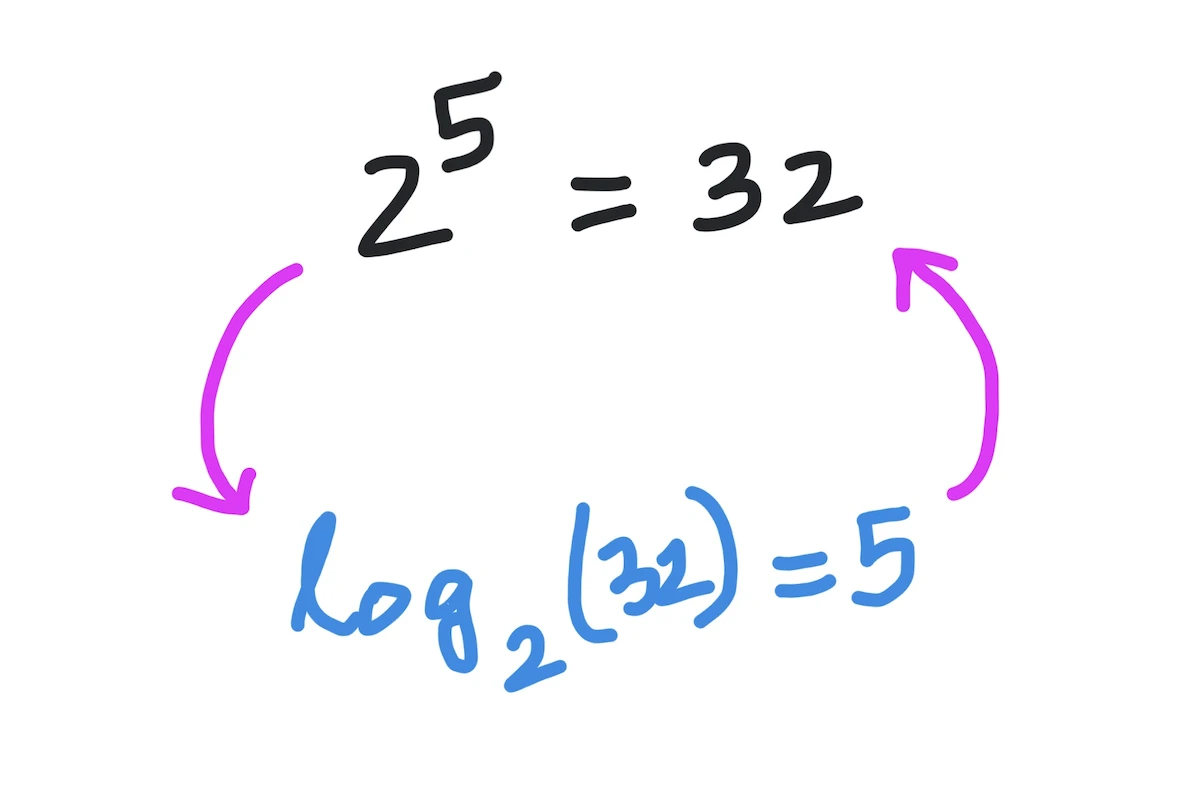Kodeclik Blog
Python’s math.log2() function
If you're working with data that follows a logarithmic scale, the log2 function in Python can be an essential tool for your data analysis. In this post, we'll explore what the log2 function is, how to use it in Python, and some practical applications.
What is the log2 function?
The log2 function is a mathematical function that returns the logarithm of a number with base 2. Let us recall what the logarithm means. Logarithms are just another name for exponents or powers. Because 10^2 = 100, we say that the logarithm of 100 (to the base 10) is 2. Similarly, because 2^5 = 32, we say that the logarithm of 32 to the base 2 is 5. This is what log2 is, i.e., it is computing a logarithm to the base 2 (unlike the previous example that was with respect to base 10).
Stated differently, log2() tells you how many times you need to divide a number by 2 before you reach 1. For example, the log2 of 8 is 3, because 8 can be divided by 2 three times to get 1 (8/2/2/2 = 1). Similarly, the log2 of 1 is 0 because you do not have to divide by 2 any number of times: it is already 1!
How do we use log2 in Python?
Using the log2 function in Python is easy. You first need to import the math module, which gives you access to the log2 function. Here is a very simple program you can explore:
import math as m
print(m.log2(32))In this code, we import the math module as “m”, and then use the log2 function to find the logarithm (to the base 2) of 32. The output is 5 as expected:
5.0Here is a more elaborate program exploring log2 of various numbers and printing a very descriptive output:
import math as m
for x in range(13):
y = pow(2,x)
print("2^" + str(x) + " = " + str(y) +
", so log2(" + str(y) + ") = " + str(m.log2(y)))
In this program, we use the pow() function to first compute powers of 2, in a loop, and then use log2() to reconstruct the exponent. The resulting values are printed in a user-friendly sentence, one for each step of the loop. The output is:
2^0 = 1, so log2(1) = 0.0
2^1 = 2, so log2(2) = 1.0
2^2 = 4, so log2(4) = 2.0
2^3 = 8, so log2(8) = 3.0
2^4 = 16, so log2(16) = 4.0
2^5 = 32, so log2(32) = 5.0
2^6 = 64, so log2(64) = 6.0
2^7 = 128, so log2(128) = 7.0
2^8 = 256, so log2(256) = 8.0
2^9 = 512, so log2(512) = 9.0
2^10 = 1024, so log2(1024) = 10.0
2^11 = 2048, so log2(2048) = 11.0
2^12 = 4096, so log2(4096) = 12.0Parameters of the log2 function
As seen above, the log2 function takes only one argument, which is the number you want to find the logarithm of. The argument must be a positive number, or else a ValueError will be raised.
Practical applications of log2
The log2 function has practical applications in various fields, including data science, cryptography, and signal processing. For example, in data science, it is often used to transform data that follows a logarithmic scale into a linear scale, which can be easier to analyze.
In this post, we've explored what the log2 function is, how to use it in Python, and some practical applications. By using this function, you can easily perform logarithmic calculations in your Python programs and manipulate data that follows a logarithmic scale.
If you liked this blogpost, learn about the log10() function in Python, also in the Math module!
Interested in more things Python? Checkout our post on Python queues. Also see our blogpost on Python's enumerate() capability. Also if you like Python+math content, see our blogpost on Magic Squares. Finally, master the Python print function!
Want to learn Python with us? Sign up for 1:1 or small group classes.